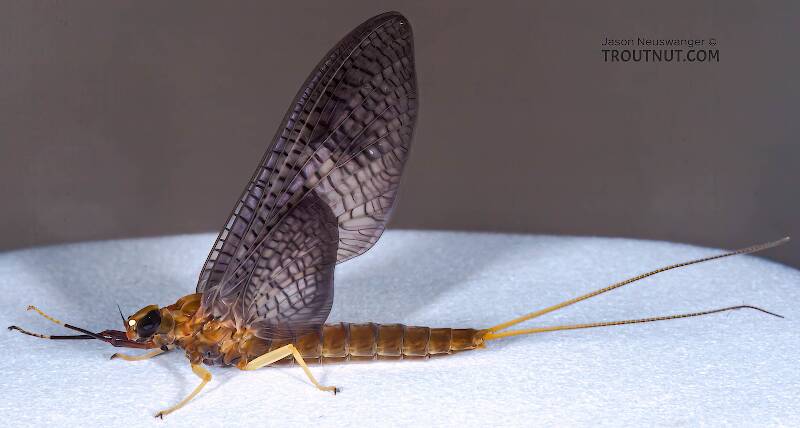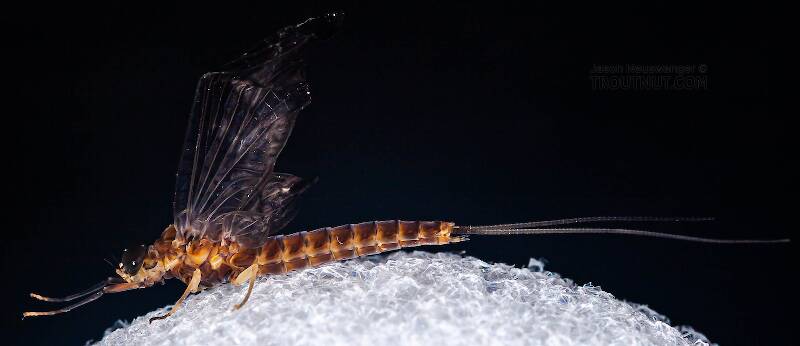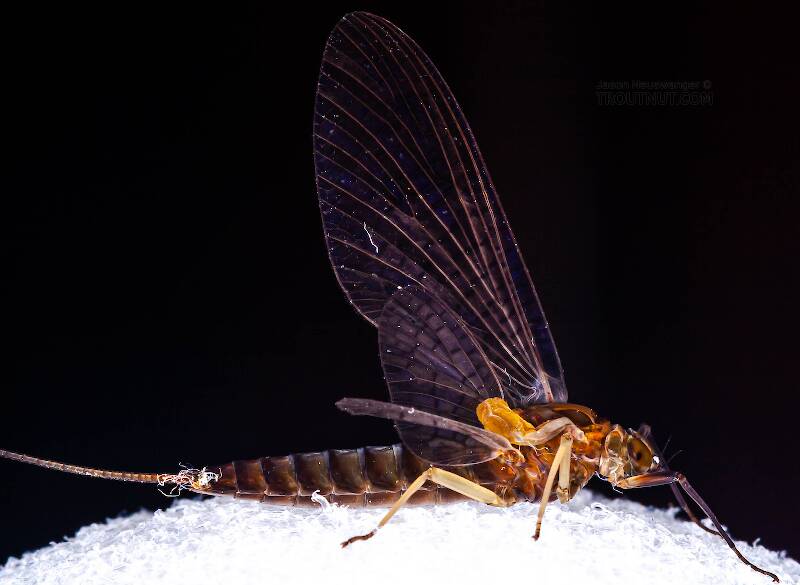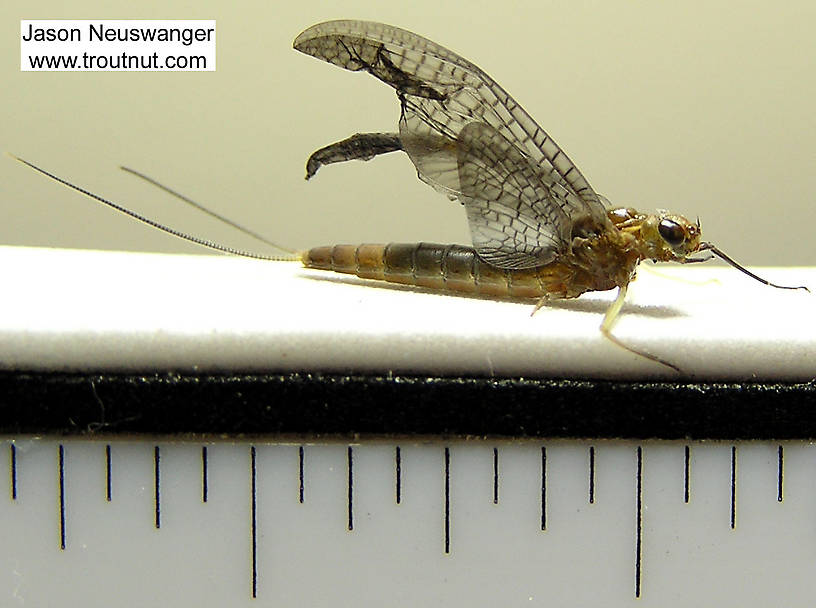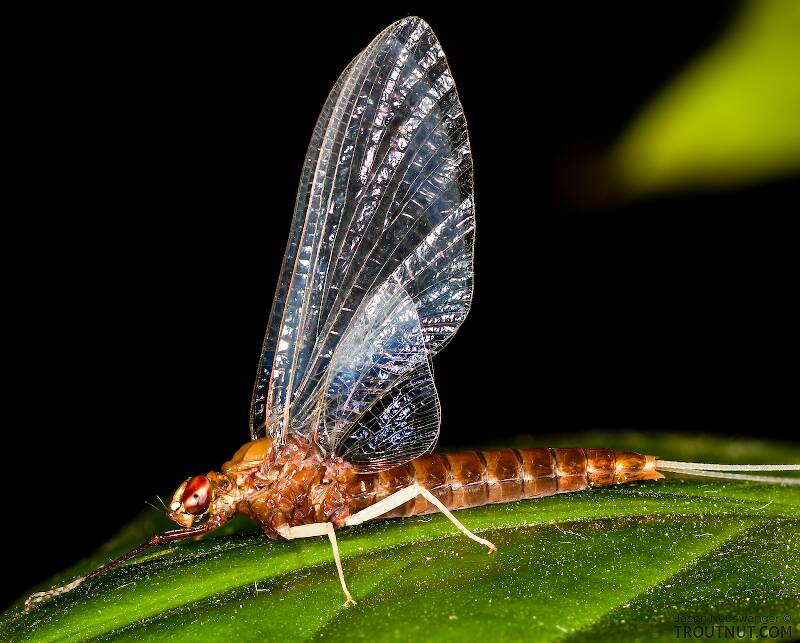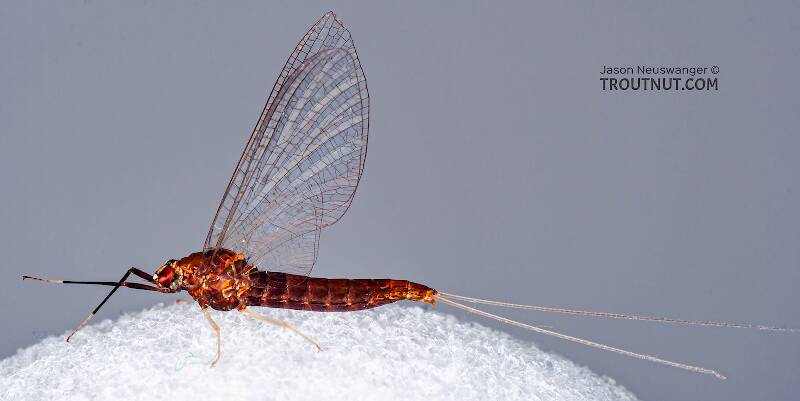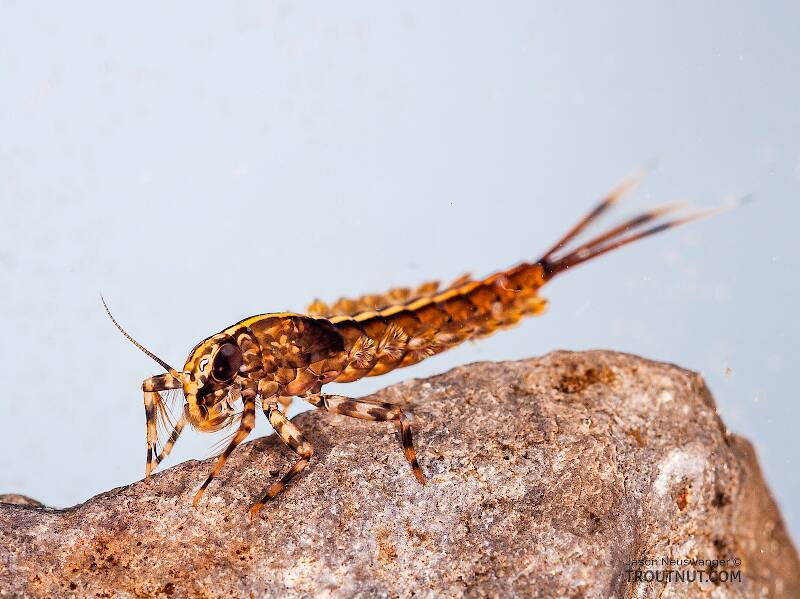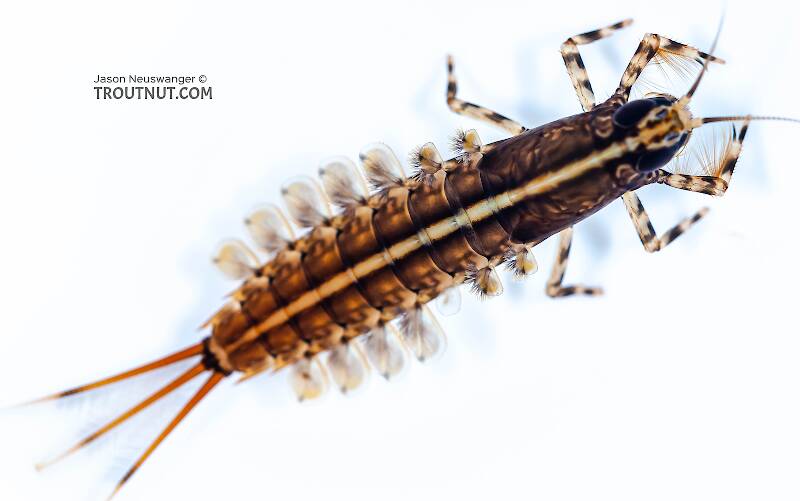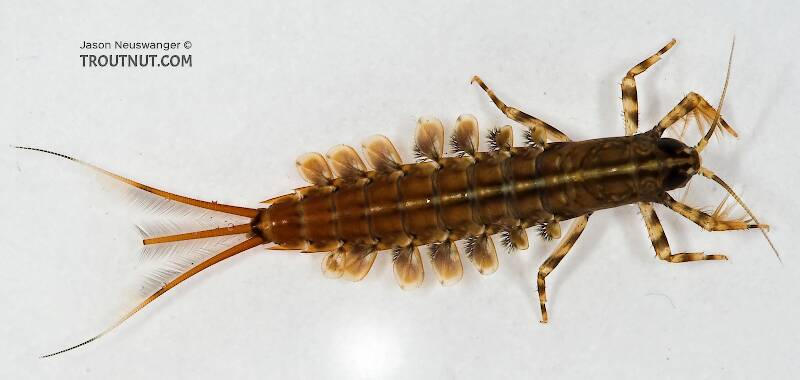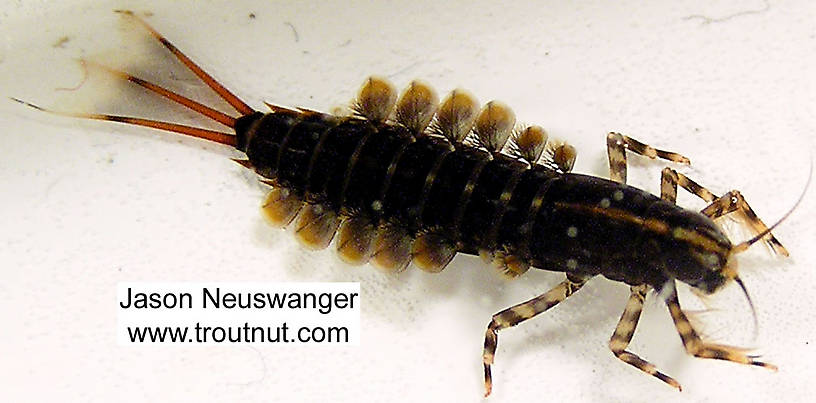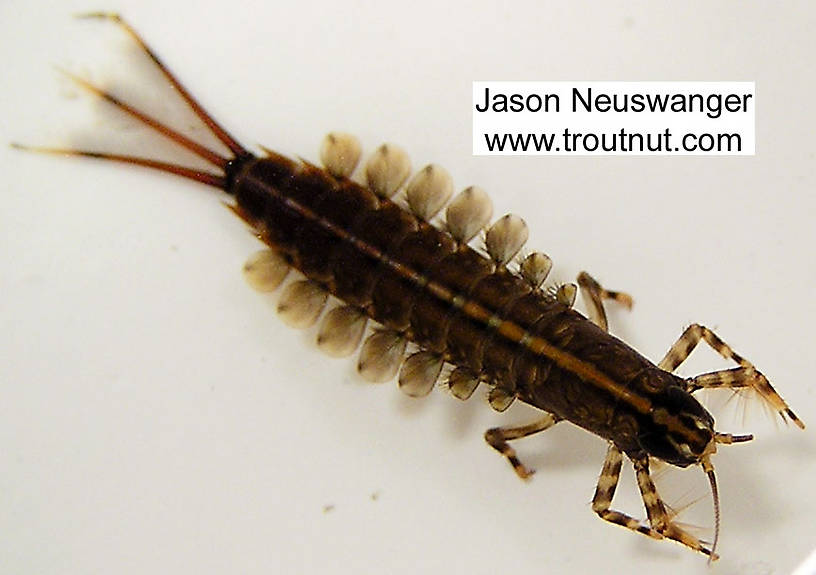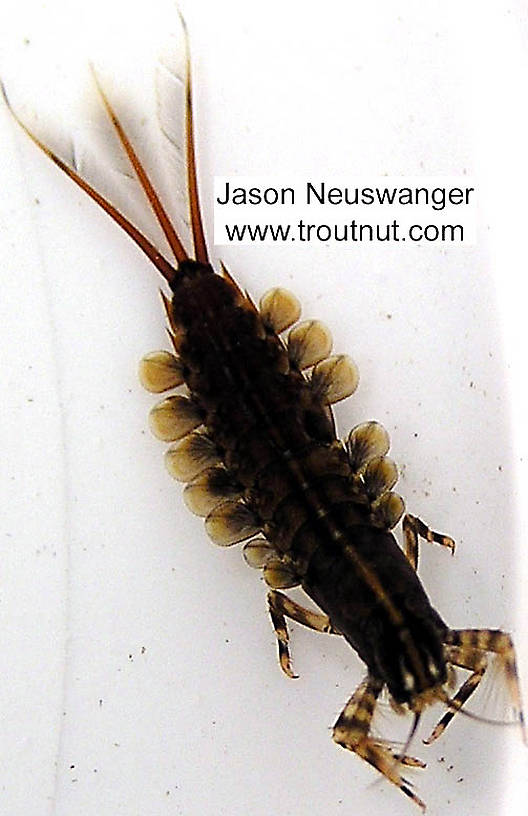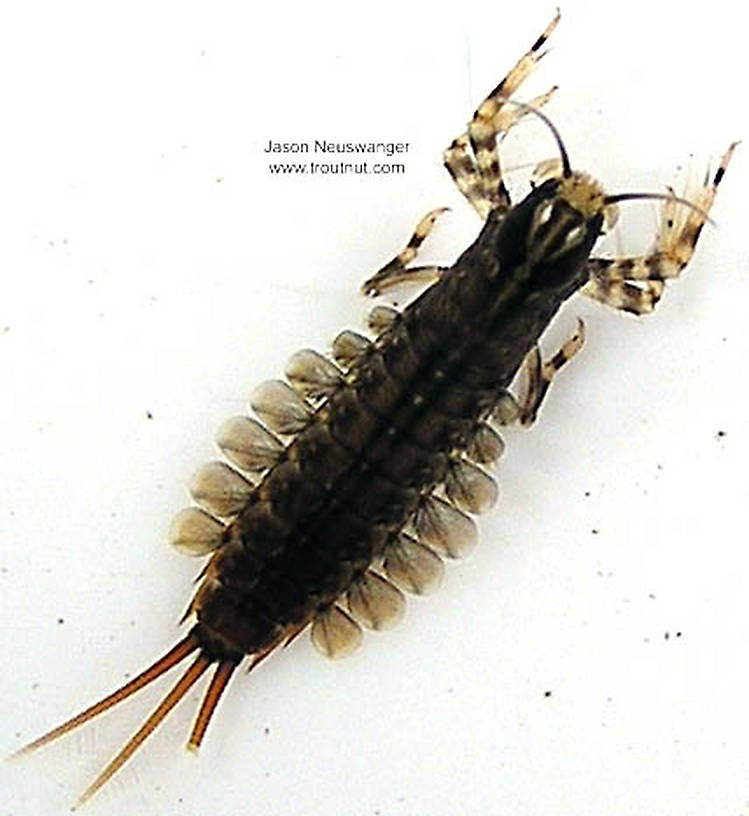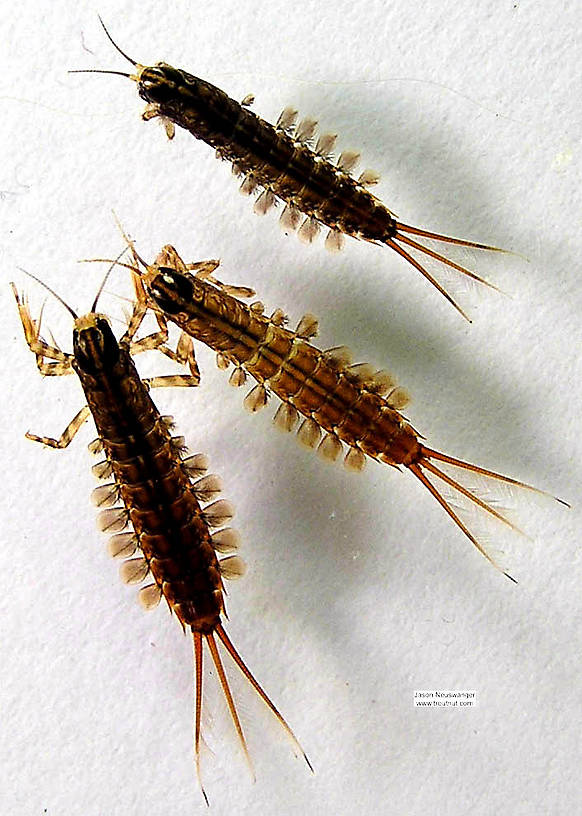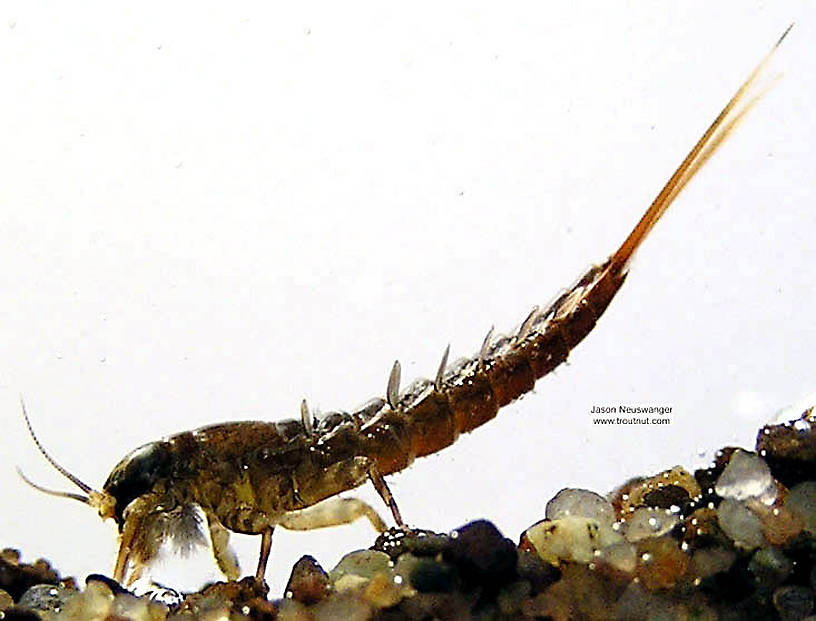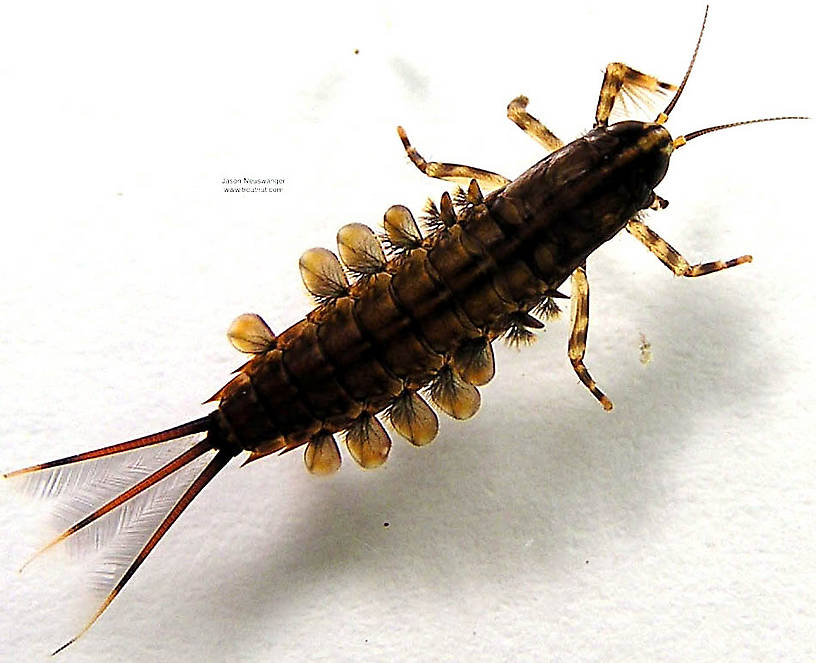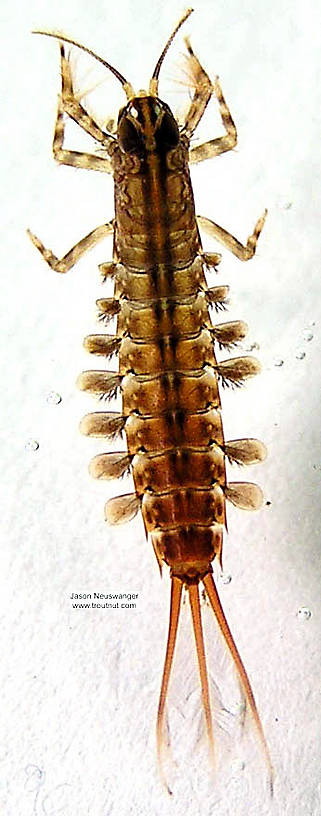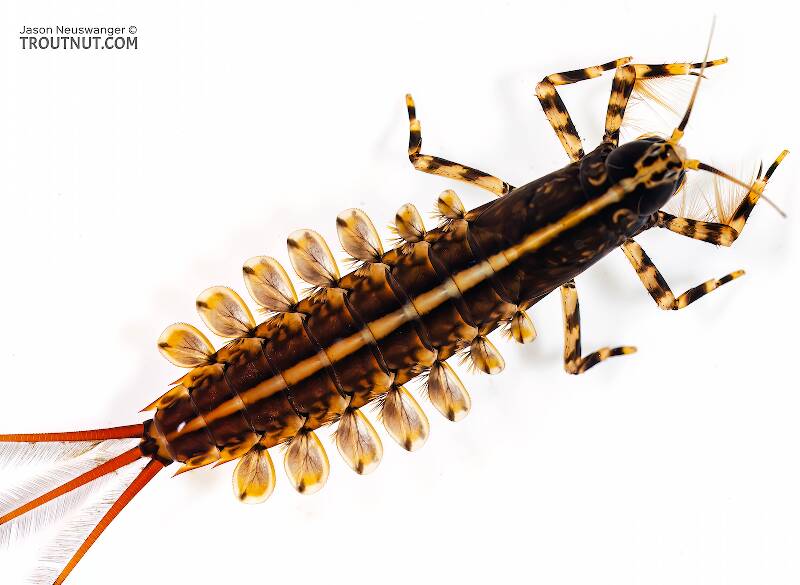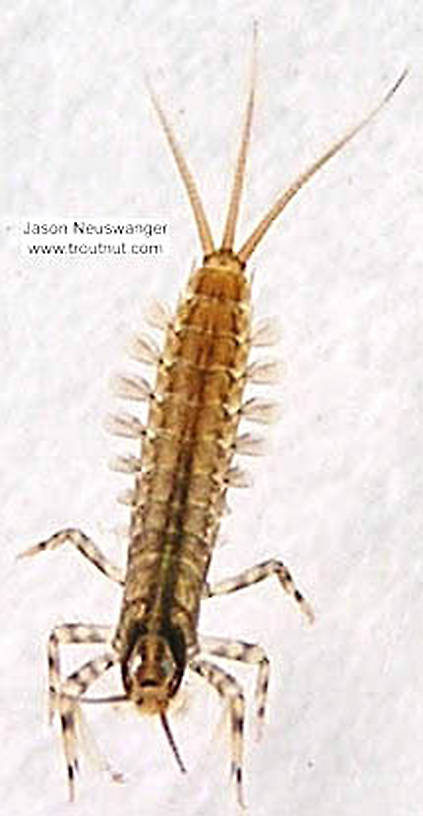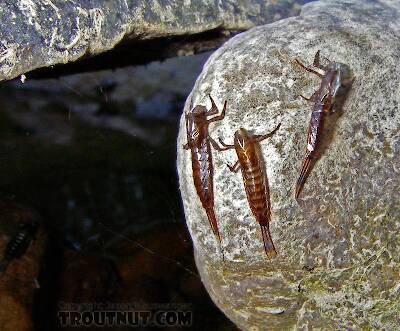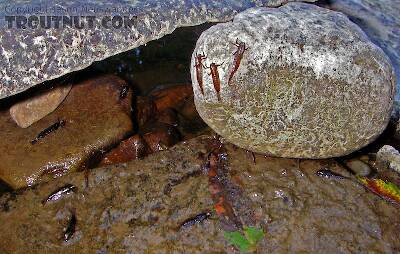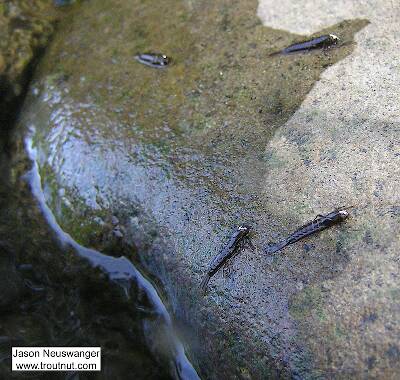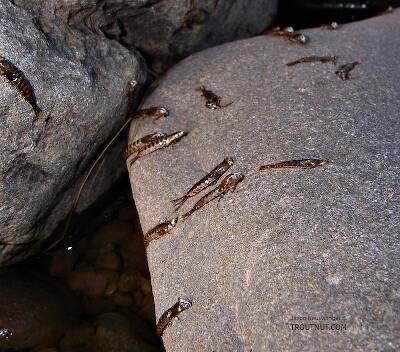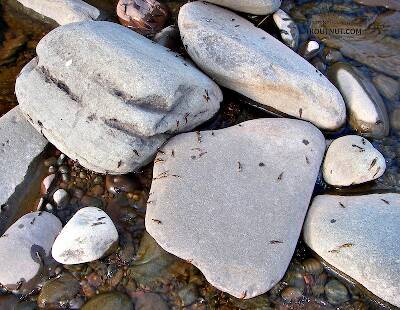
Salmonflies
Pteronarcys californica
The giant Salmonflies of the Western mountains are legendary for their proclivity to elicit consistent dry-fly action and ferocious strikes.
Featured on the forum

This one seems to tentatively key to Holocentropus, although I can't make out the anal spines in Couplet 7 of the Key to Genera of Polycentropodidae Larvae nor the dark bands in Couplet 4 of the Key to Genera of Polycentropodidae Larvae, making me wonder if I went wrong somewhere in keying it out. I don't see where that could have happened, though. It might also be that it's a very immature larva and doesn't possess all the identifying characteristics in the key yet. If Holocentropus is correct, then Holocentropus flavus and Holocentropus interruptus are the two likely possibilities based on range, but I was not able to find a description of their larvae.

Troutnut is a project started in 2003 by salmonid ecologist Jason "Troutnut" Neuswanger to help anglers and
fly tyers unabashedly embrace the entomological side of the sport. Learn more about Troutnut or
support the project for an enhanced experience here.
Mayfly Genus Isonychia (Slate Drakes)
Sporadic hatches are rarely as outstanding as those of Isonychia. On streams with good populations, they are reliably hatching in light numbers, here and there, for most of the evening through most of the mid- to late season.
The spinners, and occasionally the duns, produce more concentrated action, but the real value of the Isonychia hatch is its duration and the size of the flies; large trout become ever watchful for them, even when they aren't emerging.
All the species of Isonychia are similar in appearance and behavior.
The spinners, and occasionally the duns, produce more concentrated action, but the real value of the Isonychia hatch is its duration and the size of the flies; large trout become ever watchful for them, even when they aren't emerging.
All the species of Isonychia are similar in appearance and behavior.
Where & when
Preferred waters: Best in freestone streams
Some people say the Isonychia species are multibrooded, but this is not technically correct, even though their pattern of emergence is similar. In true multibrooded mayflies like the Baetidae, the flies emerging in midsummer or Fall are the offspring of the earlier hatch from the same year. In Isonychia, the Fall emergers are offspring from the previous Fall. They are present as half-grown nymphs when the first of their generation emerge.
In 120 records from GBIF, adults of this genus have mostly been collected during June (38%), July (31%), August (16%), and September (6%).
In 42 records from GBIF, this genus has been collected at elevations ranging from 180 to 5407 ft, with an average (median) of 3018 ft.
Genus Range
Hatching behavior
Isonychia duns may emerge on the surface or by crawling out onto shore. This behavior can vary within a single species, and it seems to depend on geographic location and the weather conditions.Spinner behavior
Time of day: Dusk
Habitat: Riffles
I experienced a good Isonychia bicolor year on one northern Wisconsin river during which there were many duns for up to a month, but I never saw any spinners despite fishing appropriate riffles dozens of times at dusk. I have not solved this mystery, but there is more to timing these events than has been so far discovered.
Nymph biology
Diet: Mostly plankton; sometimes other aquatic insects
Current speed: Medium to Fast
Substrate: Boulders and gravel
Environmental tolerance: Quite tolerant of pollution and marginal temperature
They are very unusual mayfly nymphs for three reasons:
- They have tufts of setae on the insides of their forelegs which they hold up in the current as nets to filter out plankon for food.
- Despite their superb plankton-feeding capabilities, they are also among the few types of predatory mayflies. They may feed on midge and caddis larvae and smaller mayfly nymphs.
- They are unique among mayflies in that they have extra tuft-shaped gills at the base of their fore legs, a structure normally found in stoneflies.
Specimens of the Mayfly Genus Isonychia
5 Female Duns
1 Male Spinner
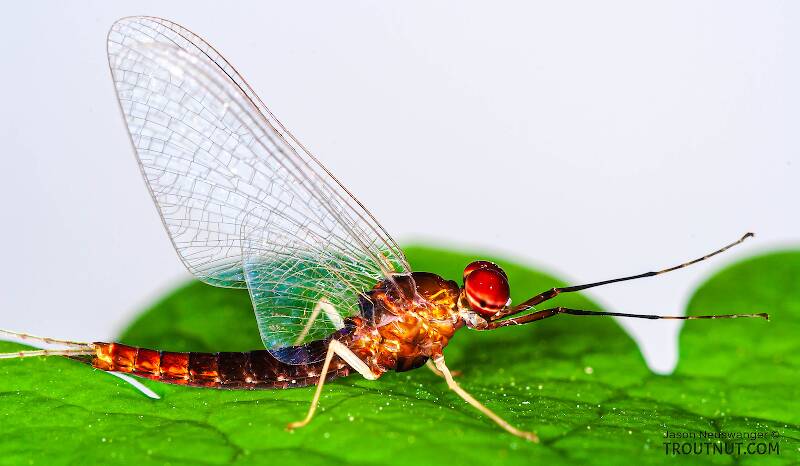
I got several really nice pictures of this spinner. I also collected a female on the same trip.
2 Female Spinners
13 Nymphs
5 Streamside Pictures of Isonychia Mayflies:
Discussions of Isonychia
Are Isonychia mayflies technically multibrooded?
4 replies
Posted by Troutnut on Jul 22, 2006
Last reply on Apr 17, 2009 by GONZO
Here's what I've written in my article on Isonychia about their hatching:
I'm curious if they can really be called multibrooded or not, since they don't produce more than one generation per year (as far as I know). They simply have distinct populations within the same generation which emerge at different times during the year. Does that count?
All my books are packed up in boxes right now so I don't have a technical definition of the term handy.
Some Isonychia species are multibrooded, but not in the same way as most other multibrooded mayflies like the Baetidae. In those species, the flies emerging in midsummer or Fall are the offspring of the earlier hatch from the same year. In Isonychia, the Fall emergers are offspring from the previous Fall. They are present as half-grown nymphs when the first of their generation emerge. Although Isonychia broods have distinct peaks, some may be found on the water at any time in between.
I'm curious if they can really be called multibrooded or not, since they don't produce more than one generation per year (as far as I know). They simply have distinct populations within the same generation which emerge at different times during the year. Does that count?
All my books are packed up in boxes right now so I don't have a technical definition of the term handy.
Penns Creek Slate Draker's
4 replies
Posted by Jsell925 on Jul 17, 2007
Last reply on Sep 23, 2007 by Shawnny3
Penns is one of the few places where a #10 iso will nail em' all year long
Iso
1 replies
Posted by JMV on Sep 21, 2006 in the species Isonychia bicolor
Last reply on Sep 21, 2006 by Troutnut
Great site, I'm an Iso. fanatic... JM
Start a Discussion of Isonychia
References
- Arbona, Fred Jr. 1989. Mayflies, the Angler, and the Trout. Nick Lyons Books.
- Caucci, Al and Nastasi, Bob. 2004. Hatches II. The Lyons Press.
- Knopp, Malcolm and Robert Cormier. 1997. Mayflies: An Angler's Study of Trout Water Ephemeroptera . The Lyons Press.
Mayfly Genus Isonychia (Slate Drakes)
Taxonomy
Species in Isonychia
Isonychia arida
0
0
Isonychia bicolorMahogany Duns
19
103
Isonychia campestris
0
0
Isonychia diversa
0
0
Isonychia georgiae
0
0
Isonychia intermedia
0
0
Isonychia obscura
0
0
Isonychia rufa
0
0
Isonychia serrata
0
0
Isonychia sicca
0
0
Isonychia velma
0
0
Species in Isonychia: Isonychia arida, Isonychia bicolor, Isonychia campestris, Isonychia diversa, Isonychia georgiae, Isonychia intermedia, Isonychia obscura, Isonychia rufa, Isonychia serrata, Isonychia sicca, Isonychia velma
5 species (Isonychia berneri, Isonychia hoffmani, Isonychia sayi, Isonychia similis, and Isonychia tusculanensis) aren't included.


